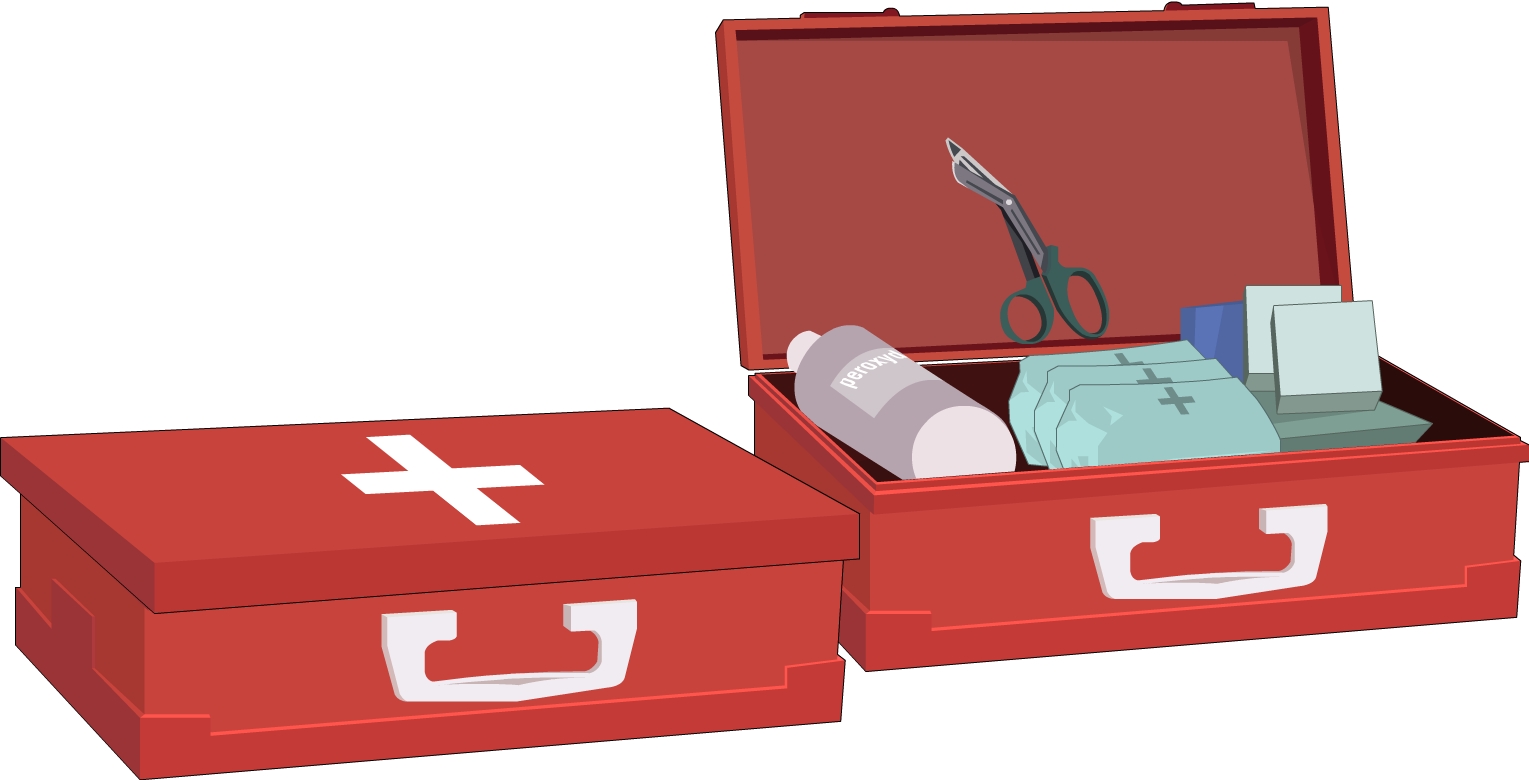Marine First Aid Kit
Every boater should take an American Red Cross or other approved first aid course. It is not only important for your own personal safety but for your passengers and other boaters you may encounter who need first aid assistance. You should also equip your boat with a first aid kit. This kit should be sufficient to deal with common problems such as sunburn, scrapes, bruises, minor burns, seasickness and bug bites.

The following is a minimum inventory of first aid supplies you should carry:
- First aid manual.
- Adhesive bandages in various sizes.
- 3-inch sterile pads.
- Triangular bandages.
- 1-inch and 3-inch rolled bandages.
- Tweezers and blunt scissors.
- Cotton balls and cotton tipped applicators.
- Antiseptic.
- Sun screen (minimum SPF 15).
- Calamine lotion.
- Motion sickness pills or patches.
- Aspirin or substitutes.
- Eyewash cup.
Boating injuries
Rescue Breathing
If a victim is not breathing they must be attended to immediately. Rescue breathing is used to maintain an airway and cause air to flow in and out of the lungs. Rescue breathing should be continued until the victim can breathe for himself/herself or a doctor or other trained person takes responsibility.
Shock
Untreated, shock can cause death from a collapse of the cardiovascular system carrying oxygen to the body's vital organs. The signs of shock may include cold, clammy skin; profuse sweating; a pale color; bluish lips; rapid pulse; and labored or rapid breathing.
To treat shock, lay the victim on their back and cover with blankets or clothing to keep them warm. Elevate the feet 8 to 12 inches higher than the head. Do not give the victim anything to eat or drink. Keep the victim comfortable until help arrives.
Bleeding
Control external bleeding by following these guidelines:
- Place direct pressure on the wound with a sterile dressing or clean cloth.
- If you do not suspect a broken bone, elevate the injured part above the level of the heart.
- Apply a pressure bandage to hold the dressing or cloth in place. Wrap snugly over the dressing to keep pressure on the wound.
- If blood soaks through the bandage, add more pads but do not remove those already in place.
- Continue to monitor vital signs.
- Help the victim rest in a comfortable position.
- Maintain normal body temperature.
- Reassure the victim.
- Care for other injuries or conditions.
Burns
Burns are classified by depth of injury; the deeper the burn, the more severe it is. Treating burns should be done in such a manner as to relieve pain, prevent infection and prevent or treat for shock.
First degree burns redden the skin much like a sunburn. Immerse the affected area in cool water or cover it with a cloth soaked in cool water. If necessary, apply a dry dressing and cover it with a bandage.
Second degree burns form blisters. Treat in the same manner as first degree burns. Do not break or try to remove any burned tissue. Do not apply any kind of antiseptic sprays or ointments. If possible, keep the affected area above the victim’s heart. Seek medical treatment as soon as possible.
Third degree burns char and destroy tissue. Call for medical help immediately. Treat for shock if necessary and continue treatment as in second degree burns.
Broken Bones
A broken bone injury should be immobilized to prevent further injury. Stop bleeding, if there is any, treat for shock and seek medical attention.